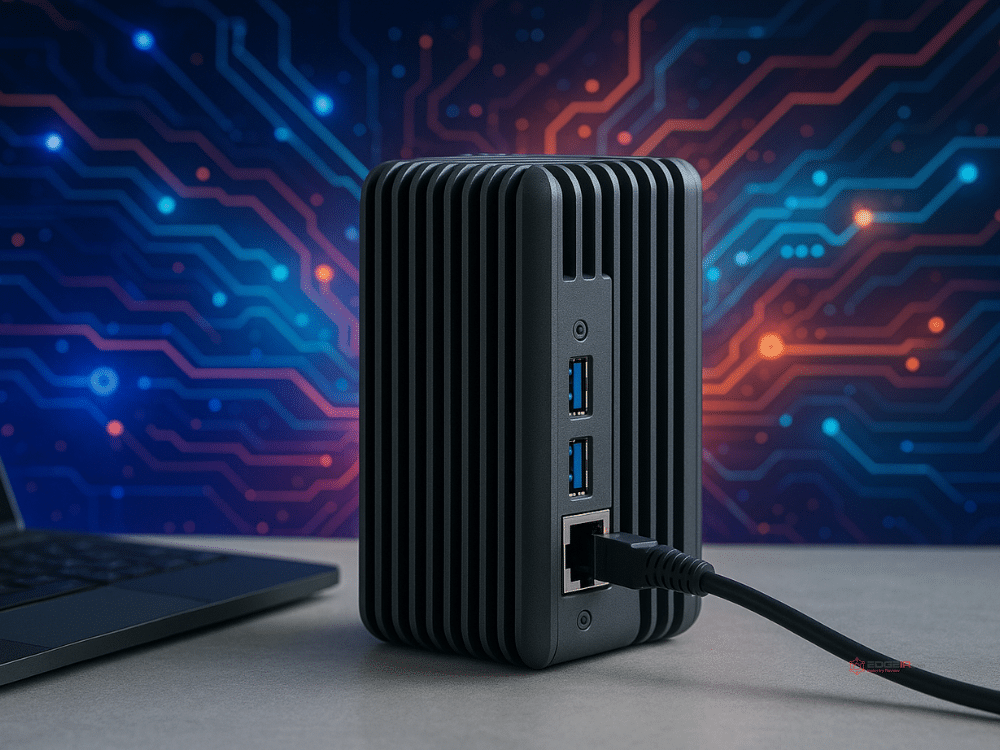AI on every surface: Why future assistants belong at the edge

By Behnam Bastani is the CEO and co-founder of OpenInfer.
AI is leaving the cloud. We are moving past the era of bulky backend AI: standard inference is fading into the background. Instead, the next wave of intelligent applications will live everywhere: in kiosks, tablets, robots, wearables, vehicles, factory gateways and clinical devices continuously understanding context, making suggestions, and rhythmically collaborating with other devices and compute layers. This isn’t speculative: it’s happening now.
What matters most is the ability for an assistant to start fast and stay intelligent even in disconnected or bandwidth-starved environments. That means realtime, zerocloud inference, with progressive intelligence as nearby compute or cloud becomes available. A new class of hybrid, local first runtime frameworks are enabling this transition, joined by silicon and OEM vendors, who are also advancing on-device, low-latency inference to reduce cloud dependence and enhance operational resilience.
Why edge AI reinvents assistants
Reducing costs
As organizations embrace AI, cloudcentric deployments quickly exceed cost budgets not just for processing but for transporting telemetry. Processing inference locally at the source slashes this burden while ensuring responses remain realtime applications (Intel 2022).
Securing mission critical or regulated data
With AI runtimes at the edge, sensitive information stays in-device. Systems like medical imaging assistants, retail POS agents, or industrial decision aids can operate without exposing confidential data to third party servers.
Eliminating latency for split second decisions
Human perception or operator intervention demands sub100 ms response. In manufacturing or AR scenarios, even cloud roundtrip delays break the user experience. Local inference delivers the immediacy needed.
Collaborative intelligence across devices
The future of edge AI lies in heterogeneous devices collaborating seamlessly. Phones, wearables, gateways, and cloud systems must fluidly share workload, context, and memory. This shift demands not just distribution of tasks, but intelligent coordination an architecture where assistants scale naturally and respond consistently across surfaces where device, neighbor edge node, and cloud participate dynamically is central to modern deployments (arXiv).
The edge assistant stack: Core principles
| Principle | Why it matters |
| Collaborative AI workflows at the edge | These workflows let AI agents collaborate across compute units in real time, enabling context-aware assistants that work fluidly across devices and systems |
| Progressive intelligence | Capability should scale with available nearby compute standard on headset, extended on phone or PC, full model when in cloud |
| OSaware execution | Inference models must adapt to device OS rules, CPU/GPU resources, battery or fan states ensuring consistent behavior |
| Hybrid architecture design | Developers should write a single assistant spec without splitting code per hardware. Frameworks must decouple model, orchestration and sync logic |
| Open runtime compatibility | Edge frameworks should sit atop ONNX, OpenVINO, or vendor SDKs to reuse acceleration, ensure interoperability, and adapt seamlessly to emerging silicon platforms (en.wikipedia.org) |
Four use case patterns transforming vertical domains
- Regulated & privacy-critical environments
Law firms, healthcare providers, and financial institutions often operate under strict data privacy and compliance mandates. Local-first assistants ensure sensitive workflows and conversations stay entirely on-device enabling HIPAA, GDPR, and SOC2-aligned AI experiences while preserving user trust and full data ownership.
- Real-time collaboration
In high-pressure settings like manufacturing lines or surgical environments, assistants must provide instant, context-aware support. With edge-native execution, voice or visual assistants help teams coordinate, troubleshoot, or guide tasks without delay or reliance on the cloud.
- Air-gapped or mission-critical zones
Defense systems, automotive infotainment platforms, and isolated operational zones can’t rely on consistent connectivity. Edge assistants operate autonomously, synchronize when possible, and preserve full functionality even in blackout conditions.
- Cost-efficient hybrid deployment
For compute-heavy workloads like code generation, edge-first runtimes reduce inference costs by running locally when feasible and offloading to nearby or cloud compute only as needed. This hybrid model dramatically cuts cloud dependency while maintaining performance and continuity.
Why this matters: A local-first and collaborative future
Edge assistants unlock capabilities that once required cloud infrastructure now delivered with lower latency, better privacy, and reduced cost. As compute shifts closer to users, assistants must coordinate seamlessly across devices.
This model brings:
- Lower cost, by using local compute and reducing cloud load
- Real-time response, essential for interactive and time-sensitive tasks
- Collaborative intelligence, where assistants operate across devices and users in fluid, adaptive ways
Edge AI isn’t just about locality it’s about collaboration, continuity, and control.
Development path & next steps
Developers shouldn’t need to care whether an assistant is running in the cloud, on-prem, or on-device. The runtime should abstract location, orchestrate context, and deliver consistent performance everywhere.
To enable this:
- SDKs must support one build, all surfaces with intuitive CLI/GUI workflows for rapid prototyping
- Benchmarking should be effortless, capturing latency, power, and quality in a unified view across tiers
- Systems should define clear data contracts: what stays local, when to sync, how assistants adapt to shifting resources
The future of edge AI tooling is invisible orchestration, not micromanaged deployment. Let developers focus on building assistants, not managing infrastructure.
Conclusion
The edge is no longer a fallback; it’s the primary execution environment for tomorrow’s assistants. Where surfaces once stood disconnected or dumb, they are now becoming context-aware, agentic, and collaborative. AI that remains robust, adaptive, and private spanning from headset to gateway to backplane is possible. The real prize lies in unleashing this technology across devices without fragmentation.
The time is now to design for hybrid, context intelligent assistants not just cloudbacked models. This platform shift is the future of AI at scale.
About the author
Behnam Bastani is the CEO and co-founder of OpenInfer, where he is building the inference operating system for trusted, always-on AI assistants that run efficiently and privately on real-world devices. OpenInfer enables seamless assistant workflows across laptops, routers, embedded systems, and more starting local, enhancing with cloud or on-prem compute when needed, and always preserving data control.
Article Topics
agentic AI | AI agent | AI assistant | AI/ML | edge AI | hybrid inference


Comments